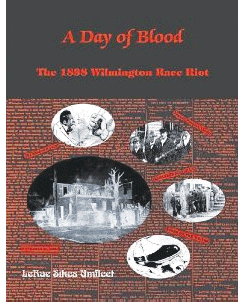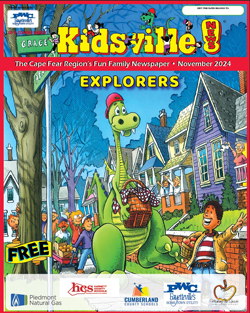 In all likelihood, racial tension will continue to be a part of our lives until the end of time. Dr. Martin Luther King dreamed of the day that a man would be judged by the content of his character, not the color of his skin. Sadly, this is not that day.
In all likelihood, racial tension will continue to be a part of our lives until the end of time. Dr. Martin Luther King dreamed of the day that a man would be judged by the content of his character, not the color of his skin. Sadly, this is not that day.
The Museum of the Cape Fear Historical Complex has a new exhibit, Fayetteville and the Wilmington Race Riot of 1898, an overlooked piece of North Carolina’s history. The riots, which occured in mid-November 1898 were considered a turning point in North Carolina politics following Reconstruction. Originally labeled a race riot, the events were caused by Democratic insurrectionists who overthrew the legitimately elected local government in an effort to reestablish white supremacy in government and society.
“This is a very disturbing piece of our state’s history,” said David Reid, administrator of the Museum of the Cape Fear Historical Complex. “It is not a well-known piece of our history and it was not an isolated event.”
The Civil War ended slavery but it did not end the racial divide between the races. The election of 1898 was dominated in North Carolina by a white supremacy campaign of the Democratic Party, which saw the establishment of white government union clubs and formations of armed gangs to intimidate blacks, Republicans and Populists, and the use of newspapers to fan the flames against the abuses of Republicans and black rule. The impact of this resulted in a “White Declaration of Independence” which led to the burning of a black newspaper office, deadly riots, the eradication of many black and Republican leaders and the overthrow of elected Republican leaders.
“We have some interesting local connections,” said Reid. “Charles Chesnutt, author, was a prominent figure who was raised in the Fayetteville area.”
Chesnutt’s response to the race riot was to write a novel, The Marrow of Tradition. He traveled back through Fayetteville during 1901 to do research for his novel and found a brief mention in The Fayetteville Observer. Reid added that the novel really echoes what was being said in the newspapers at that time.
During the 1898 elections, groups of men wearing red shirts attended political rallies and rode through African-American neighborhoods carrying firearms. Their goal was to intimidate blacks to keep them from voting. Many acts of violence against African-Americans and white members of the Populists and Republican parties were blamed on the Red Shirts.
“We wanted exhibits and programs that would promote healthy community discussions about intolerance and diversity,” said Reid. “It was important to find events that would pertain to our area.”
Reid added that Wilmington is 90 miles down the road and he was interested in Fayetteville’s involvement with the Wilmington Riot.
Author LeRae Umfleet will speak about the Wilmington Race Riot on Sunday, April 14 at 2 p.m. at the museum. Umfleet is the author of A Day of Blood: The Wilmington Race Riot of 1898. The exhibit will run through June 16. For more information, call 486-1330.

 How to resolve AdBlock issue?
How to resolve AdBlock issue? 








